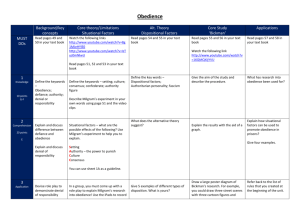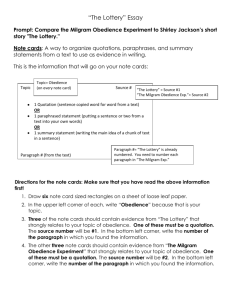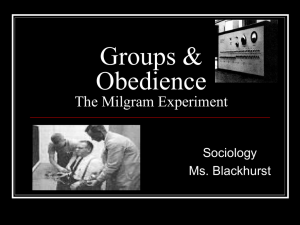Social Psychology
advertisement
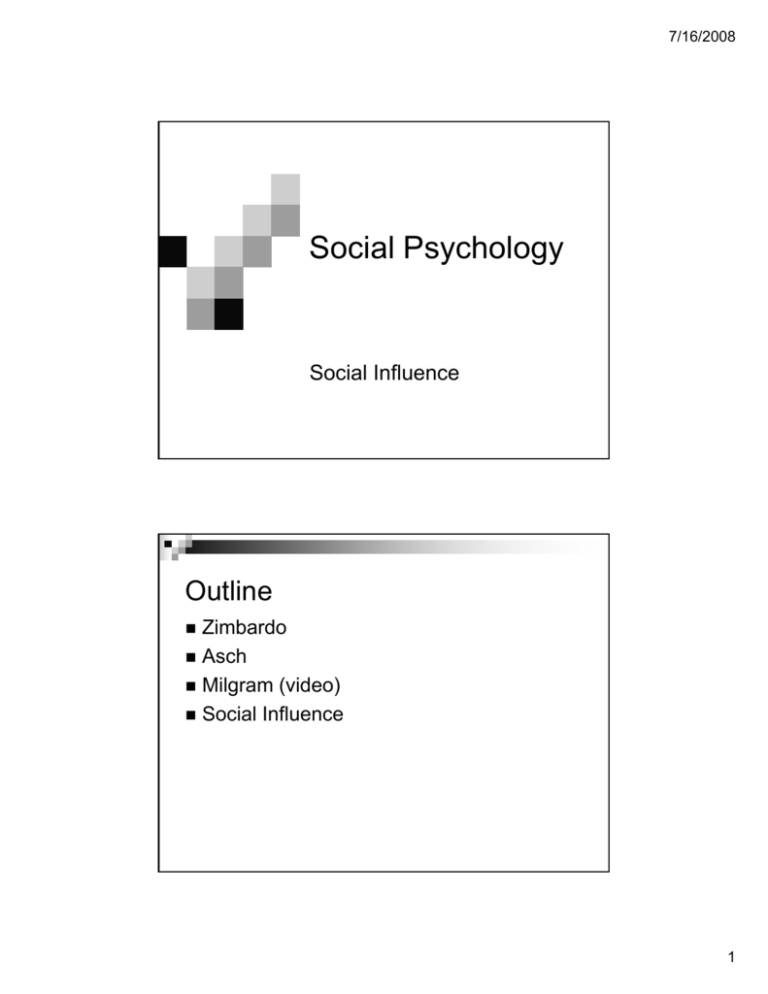
7/16/2008 Social Psychology Social Influence Outline Zimbardo Asch Milgram (video) Social Influence 1 7/16/2008 Introduction to Study In 1970s Phil Zimbardo was funded to study antisocial behavior 24 total students: 9 guards, 9 prisoners Regular college guys Intended to lock them in the basement at Stanford for two weeks Guards were trained in techniques Prisoners were taken in by police, fingerprinted, stripped, and deloused Conformity A change in a person person’s s behavior or opinions as a result of real or imagined pressure from a person or group of people Compliance: Conforming to an implied or explicit request in public while privately disagreeing g g Obedience: Conforming to an explicit request Acceptance: Conforming that also involves a change in belief 2 7/16/2008 Norm Formation via Informational Social Influence Informational Social Influence: The influence of other people that leads us to conform because we see them as a source of information We believe others’ interpretation of an ambiguous situation is more correct than ours Why conform? Informational social influence: They thought maybe they were wrong 3 7/16/2008 Why conform? Normative social influence: The influence of other people that leads us to conform in order to be liked, accepted, or not rejected What influences conforming to group pressure? Size of the group Having an ally When the group is cohesive or important The more cohesive (extent of “we-ness” of group) g p) and the more important p the g group p the more conformity 4 7/16/2008 Milgram’s classic obedience study (1963) The design Participants arrived at the lab, ostensibly, with another participant (confederate; 47 yr. old, pleasantlooking, somewhat overweight fellow) Milgram wearing white lab coat Told study was on effect of punishment on learning Participants always assigned to be the teacher Confederate was the learner (word pair task) Teacher had to give escalating shocks for incorrect responses (start at 15 volts, increase by 15) Increasing protests of learner 15-60: no protests 75-135: “Ugh!” 150: “That’s That s all, all get me out of here here. I told you I have heart trouble…” 210: “Ugh! Experimenter! Get me out of here…I won’t be in the experiment any more. 285: Agonized scream 315: Intensely agonized scream. “I told you I refuse to answer, I am no longer a part of this experiment. After 330 volts, no responses at all 5 7/16/2008 Estimates of compliance People (students, (students Psychiatrists, Psychiatrists working people) estimated they would stop complying by 135 volts (strong shock); No one said more than 300 When e as asked ed what a o other e peop people e would ou d do estimated that 1 in 1,000 would “go all the way” (to 450 or XXX) Why Proximity Matters Empathic understanding of pain Prevented diverted attention Viewed by person they were hurting Saw impact directly Formed g group p with experimenter p or learner based on proximity May not have learned not to aggress against those who are remote from us. 6 7/16/2008 Growing tension Tension signs Physical problems Speech Laughter Smiling Self rated anxiety Reflections on Milgram’s obedience studies Destructive obedience or indecisive disobedience? Most participants questioned experimenter Situation did not make sense or add up Hard to translate intention to disobey into action Subjects j became indecisive,, unwilling g or unable to challenge authority; dependent on the calm authority figure Ethics: Who’s responsible? 7 7/16/2008 What about not conforming? How do we treat the nonconformist? Johnny Rocco study (Schachter, 1951) Deviant in group received most comments from others to convince him, until the end Ignored at the end, rejected Nominated him to be kicked off the island Assigned him meaningless tasks Law of Social Impact Latane I = SIN Where: I = social impact S = strength of impact sources I = immediacy in time or space N = # of impact sources 8 7/16/2008 Diffusion Anonymous Confident Positive Emotions Individual Differences IQ Self esteem Internal control Need for social approval Gender Social desirability 9 7/16/2008 Social Example Aronson & O’Leary O Leary Water conservation Cialdini Littering Minority Effects (Moscovici) Consistent Coherent Forceful 10 7/16/2008 Who do we agree with? Thorndike Those we admire Bennington girls Liberal at school Conservative at home Bases of Social Power (Bertram, Raven) Rewards Coercion Expertise Information Referent power Legitimate authority 11 7/16/2008 Norms Understanding of acceptable behavior Implicit Unwritten Cultural Group Specific Group Decision Making Hitler, Nixon White house Hitler house, Challenger explosion, Enron Cohesive Isolated Group think Illusions of invulnerability 12 7/16/2008 Cults Changed norms Gradual Powerful leader Unquestioned authority 13
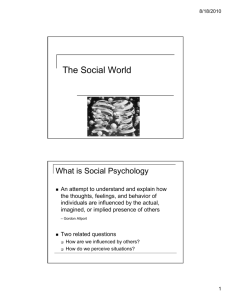
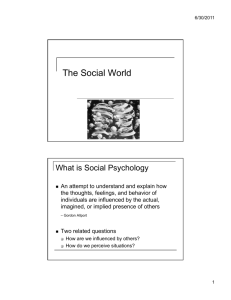
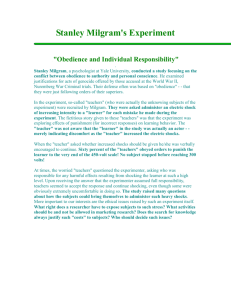

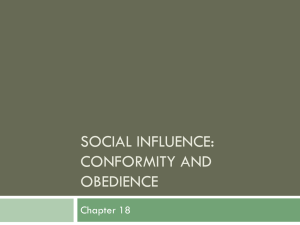
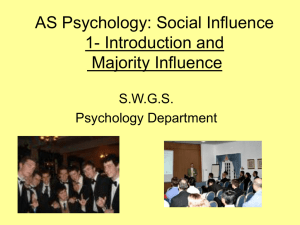
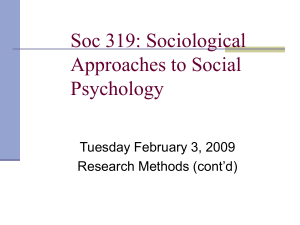
![milgram[1].](http://s2.studylib.net/store/data/005452941_1-ff2d7fd220b66c9ac44050e2aa493bc7-300x300.png)
